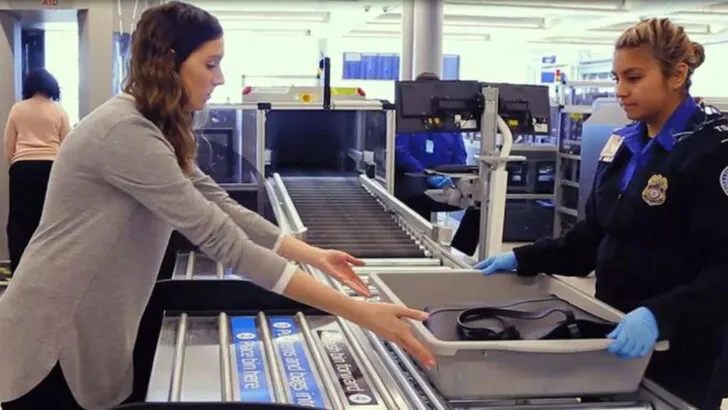You’re being watched—and not in a creepy way. The moment you step into the security line, TSA agents are sizing you up. Not out of suspicion, but out of habit. They’re trained to spot the subtle stuff: posture, pace, what you’re wearing, and even what’s missing from your hands. Your face might be calm, but your body could be screaming nerves. That oversized jacket? It’s not just a fashion choice—it might raise questions. And that coffee you’re clutching? They clock it before you even realize it’s not going through the scanner. TSA agents don’t just see travelers—they read them. And what they pick up on in the first few seconds might shape how smooth (or bumpy) your security experience is. So before you roll up to the conveyor belt, take a breath… They already noticed more than you think.
Your Passport and Boarding Pass
The first thing a TSA agent notices is often the passport and boarding pass. These documents are crucial for confirming your identity and travel plans. Ensuring that they are ready and easily accessible can make the process smoother.
If your documents are well-organized, it reflects preparedness and can positively influence the agent’s perception. On the other hand, scrambling for them might raise unnecessary suspicion.
An interesting fact is that agents are trained to recognize authentic documents and spot inconsistencies, making these papers a critical aspect of their security checks.
Your Attire
Clothing can say a lot about a person, and TSA agents are attuned to this. Whether you’re in business attire or cozy travel wear, your choice of dress might influence their perception.
Bright or unusual clothing can draw attention, while layers may raise questions during security checks. It’s all part of how agents gauge their surroundings.
Did you know? Some travelers opt for slip-on shoes to speed up the process, as removing footwear is often required. Agents notice these small details as part of their assessment of passengers.
Your Body Language
Body language is a universal language, and TSA agents are experts in reading it. Nervousness, fidgeting, or avoiding eye contact can be red flags. Calmness and confidence, on the other hand, make a positive impression.
Agents are trained to detect signs of anxiety or stress, as these could indicate discomfort or concealment of something.
Fascinatingly, despite the rigorous training, agents are also aware that some people’s natural demeanor might appear nervous, and they approach such cases with discernment and professionalism.
Your Luggage
Luggage speaks volumes about a traveler, and TSA agents pay close attention to it. A well-packed suitcase can reflect organization, while overstuffed bags might suggest otherwise.
Unique or heavily decorated luggage might catch an agent’s eye, and they are quick to notice any irregularities, such as tampering or damage.
Interestingly, agents are adept at spotting suspicious items during X-ray scans, and they are trained to differentiate between common travel items and potential threats, ensuring safety for everyone.
Your Attitude and Interaction
A traveler’s attitude can set the tone for their entire security experience. A friendly, respectful demeanor often leads to smoother interactions with TSA agents.
Conversely, impatience or hostility can complicate the process, drawing more scrutiny. Agents value cooperation and courtesy, which makes their job easier and the experience more pleasant for everyone involved.
Fun fact: TSA agents are trained to maintain professionalism and remain courteous, even in challenging situations. Their primary goal is to ensure security while facilitating a seamless travel experience for all passengers.
Electronic Device Handling
Right from the moment you step into the security line, the way you handle your electronic devices grabs attention. Picture a bustling morning at the airport, with travelers in varying states of readiness. Amidst this, the smooth or fumbling handling of a device can signal experience or nervousness. Is that traveler confidently placing their laptop in a bin, or hesitantly disassembling their electronic gadget? This behavior could indicate familiarity with the process or an area of potential delay.
The TSA agent, trained to ensure efficiency and safety, observes these actions closely. They are alert to any unusual handling that might require further inspection. Recognizing these nuances helps them prioritize checks and maintain the flow of the line, all while ensuring security protocols are adhered to.
Footwear Choices
Footwear is more than a style choice at airport security; it can influence the pace of your journey through the checkpoint. Consider a scenario where the line is long, and every second counts. Slip-ons might suggest a seasoned traveler, while complex laces or boots could hint at a potential slowdown.
The TSA agent notes these details, aware that easier-to-remove shoes can expedite the process. Such observations aren’t merely about efficiency; they’re part of a broader strategy to assess and facilitate a quicker, hassle-free screening experience.
By noting footwear, agents can gauge a traveler’s preparedness, contributing to a smoother security check for everyone involved.
Carry-on Organization
A well-organized carry-on bag speaks volumes about a traveler’s preparation level. Imagine the contrast between a meticulously packed bag and one where items are haphazardly stuffed. This organization not only reflects on the traveler’s readiness but also affects the smoothness of the scanning process.
TSA agents notice these differences, often predicting the ease of clearance based on the initial X-ray scan. A neatly organized bag can facilitate quicker inspection, minimizing the need for manual checks.
Understanding these subtle cues enables agents to streamline operations, ensuring that the security process remains efficient and passenger experience is enhanced without compromising safety.

